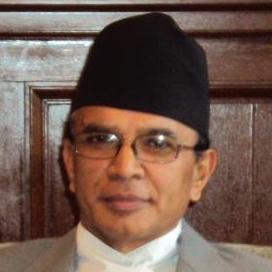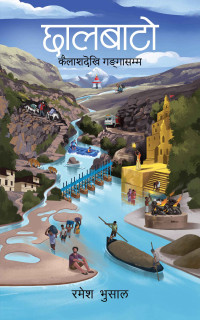Books
Frank appraisals of the working balance sheet of a Chief Justice
Though an autobiography, the book enlightens the readers with some tell-tale stories of major figures in Nepal’s judiciary and the tortuous course that it has had to historically undergo.
Madan Kumar Bhattarai
Former Chief Justice Min Bahadur Rayamajhi has recently published his autobiography under the heading Nyayapalikaka Chaar Dasak – Mero Samjhana, which can be loosely translated into Four Decades of Judiciary—My Memories. This is the second time that a former Chief Justice has come out with a full-blown autobiography, after Nayan Bahadur Khatri who had the longest tenure in the job.
The book has 14 chapters with three annexures and a photo section. It makes an interesting struggle of the author, who shifted to Birgunj first and then to Kathmandu for higher education after completing school education at his native district of Bhojpur. He not only continued his studies but also earned his living with initial associations as an assistant with Birgunj Sugar Factory and Nepal Industrial Development Corporation. It is sad that both these institutions that used to be the pride of Nepal’s endeavours for self-reliance have now been thrown to the footnotes of history after we embarked on a rather ill-conceived drive for privatisation.
While Rayamajhi’s first career choice was chartered accountancy, he pursued studies for the law degree. After a brief stint in a law firm, he passed the legal examination of the Public Service Commission and joined the judiciary. He not only started to like the new career option but took it very seriously and handled some key assignments that can be well illustrated by the fact that he was alone in his batch of 16 officers to reach the topmost position of Chief Justice. Some of his batch mates like Sharada Shrestha, Badri Kumar Basnet, Tapa Bahadur Magar, Arjun Prasad Singh, Sharada Prasad Pandit and Krishna Prasad Upadhyaya reached Supreme Court while some others occupied top echelons of administration in civil service and royal palace. It was coincidental that at least two of them, Badri Kumar Basnet and Gajendra Mani Pradhan, had taught him at school in Bhojpur.
Though an autobiography, the book enlightens the readers with some tell-tale stories of major figures in Nepal’s judiciary and the tortuous course that it had to undergo under the then partyless system of governance and afterwards. There is a lurking dissatisfaction in the mind of the writer that things have not been that positive even in the changed situation of multiparty rule in the country. He feels that the judiciary is what he calls still in the grip of shortcomings, influence and pressure despite political change. One of the frank appraisals on the part of Rayamajhi is that he found senior justices of earlier generations serving both in the Supreme Court and other courts who did not have legal education, more popular and efficient than their counterparts who had formal law degrees.
The author gives credit to Chief Justice Bishwa Nath Upadhyaya for his contributions but blames him for doing everything to promote two of his uterine brothers, Kedar Nath Upadhyaya, who also succeeded in becoming Chief Justice, and Baija Nath Upadhyaya, who was Supreme Court Justice but failed in reaching to the top. He also records his verbal duel with Bishwa Nath Upadhyaya on this score. However, Rayamajhi does not have any qualms in fully accepting that all three brothers were men of integrity with full command of judicial knowledge.
The book mentions some names who made good marks in administration and even diplomacy in their careers. They include Kalyan Bikram Adhikary who died in harness as ambassador to France, Karna Dhoj Adhikary who served as Chief Secretary and ambassador to India, and Justice Ishwari Raj Mishra who had the opportunity to represent Nepal at least three times including as ambassador to the United Kingdom and Pakistan. He has also named a number of stellar brains in judicial service that he encountered and served together in his long career. They are Chief Justice Kalyan Shrestha who helped him in preparing strategic plan for judiciary, Surya Nath Upadhyaya who became Secretary in a number of ministries and later took over as the Chief Commissioner of Commission for the Investigation of the Abuse of Authority, and Ramakrishna Timalsena who retired as Registrar of the Supreme Court and helped establish a private law college. He also credits Rekha Bahadur Rayamajhi, his relative and Nepal’s first railway engineer, for his role in his struggle for both education and job at Birgunj.
The book has a chronological study of the status of judiciary in the country especially in remote places and efforts being made to enable them to make use of technology with minimum infrastructures. The author also laments seeming lack of awareness on the part of people on the role of independent judiciary as exemplified by the burning of his effigy in protest against the judgment he delivered in declaring the oath-taking by first Vice-President and his erstwhile colleague in the judiciary Parmananda Jha null and void.
Despite all these positive factors that make the book a compulsive reading especially for people who want to keep abreast of the history of Nepal’s judiciary, there are certain drawbacks in the otherwise very interesting work. One weakness of this autobiography is that it is filled with repetitions. Another problem in the book is the author’s reticence in naming people who did influence the situation.
———————————————————————————————————————




 7.12°C Kathmandu
7.12°C Kathmandu










